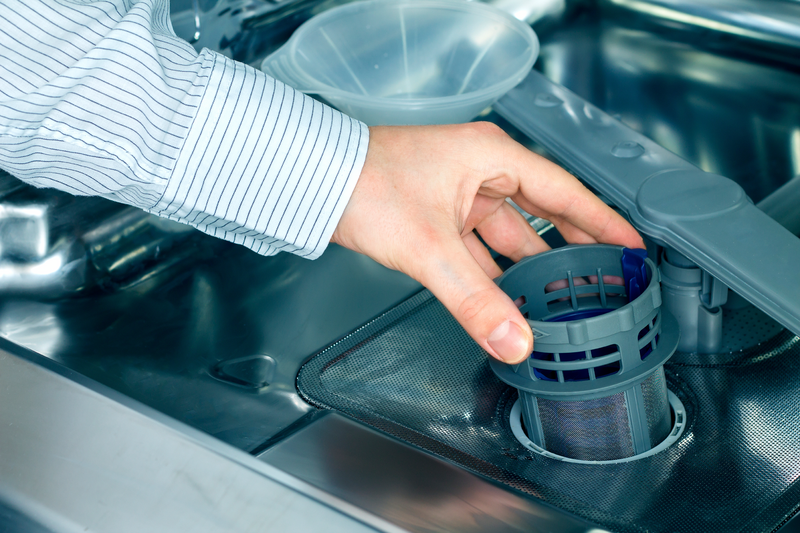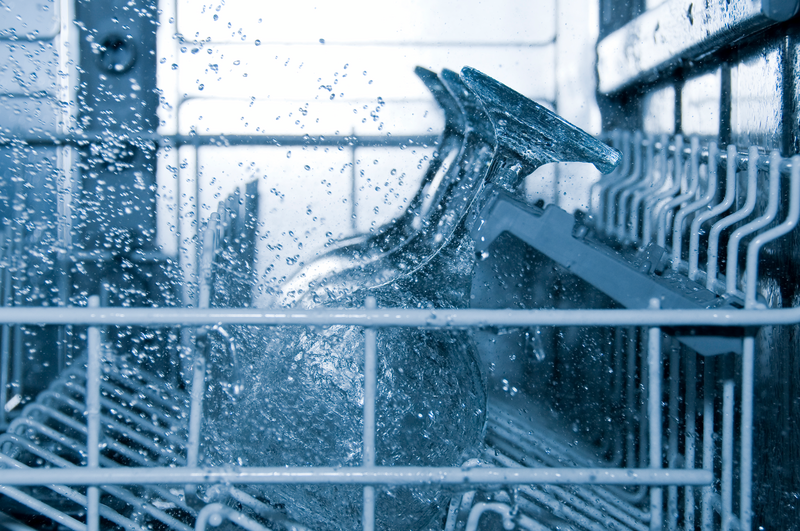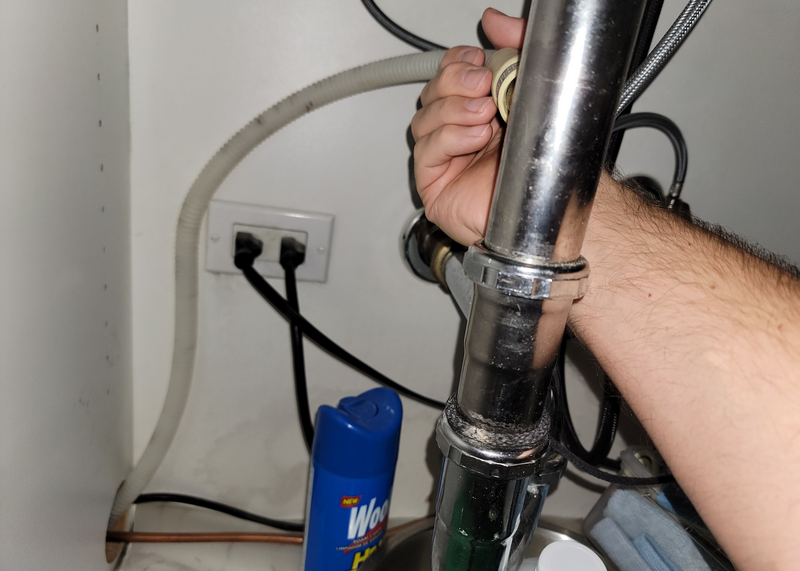- AppliancesElectriciansHVACLandscapingLocksmithPest ControlPlumbingRenovationRoofingT V RepairAll Home Improvement
- Car AccidentClass ActionCorporate LawCriminal DefenseDivorce LawEmployment LawFamily LawFinancial LawLegal AidMedical Injury LawyersMedical MalpracticeReal Estate LawWater Fire RestorationAll Legal
- InvestmentRetirementAll Finance
- Animal InsuranceAutoGeneral InsuranceHealth PolicyHome RentersAll Insurance
- DentalHealth SpecialistsAll Medical
- Animal CareVeterinaryAll Pets
- Auto GlassTowingAll Automotive
Why Does My Dishwasher Smell?

When it comes to appliances that save time and energy, you can’t do much better than a dishwasher. After all, they can clean a day’s worth of dirty dishes with the simple push of a button. But what happens when a foul stench accompanies that time-saving convenience?
Read More Home Improvement Articles
If your dishwasher smells, it usually means that grease and food particles are trapped somewhere in the unit. Truth is, even if you’re diligent about cleaning your filter and drain, these particles can build up anywhere in your unit, including the spray arm, drain hose and basically any other nook or cranny. Left to sit, these particles start to rot, emitting a foul odor that undermines the idea of clean dishes, even if the machine is working well.
In addition to trapped food particles, mold and mildew growth is another common cause of a smelly dishwasher. This occurs when water is left standing for an extended period of time, which typically points to improper drainage of some kind, like a clogged drain hose or filter.
How to Clean a Smelly Dishwasher
Needless to say, if your dishwasher is putting out a noteworthy reek, you’re going to want to solve the issue as soon as possible. Luckily, most dishwasher funks can be eliminated with a thorough cleaning.

Step 1: Clean the Dishwasher Filters and Drain
If it’s not already a part of your routine dishwasher maintenance, knowing how to clean your dishwasher filter is an important first step toward keeping your dishwasher smelling nice and fresh.
Filters are generally located at the bottom of the dishwasher, so you’ll need to start by removing the bottom racks of the dishwasher. Although the method of removing your filter depends on what type of dishwasher you have, they’re generally pretty easy to unscrew. If you run into trouble, be sure to consult the unit’s instruction manual. If you don’t have your manual on hand, you should be able to download a PDF version from the manufacturer’s webpage.
After you’ve removed the filter from the drain, examine it and the drain for any signs of obvious debris. Be warned: This can be pretty gross, as these rotten food particles and grease can resemble a slimy sludge. Soak the filter for about 10 minutes in warm water. Then, scrub the filter with a stiff brush (an old toothbrush will work just fine) and soap and hot water. After you’ve scrubbed the filter, rinse it again with water and screw it back on the drain.

Step 2: Clean the Spray Arm
Dishwasher filters and drains aren’t the only places that errant food particles can hang out. Little bits of food and grease can end up literally anywhere in your dishwasher. And even the tiniest piece of food or grease can become a breeding ground for bacteria. That’s why, if you have a smelly dishwasher, it’s important to clean multiple areas in the unit.
Take a look at the dishwasher’s spray arm for any small food particles that might be stuck to the spray holes. In order to get a close enough inspection, you’ll need to remove the spray arm from the unit. The way you remove the spray arm will vary depending on the make and model of your unit, but in most cases, you’ll need to remove the bottom rack and unscrew the spray arm from the mount attached to the top rack.
When the spray arm has been removed, take a close look and use a scrub brush to clean the arm. You can also take a small section of wire and use it to remove food particles stuck in the individual spray holes. Once you’ve scrubbed the spray arm, rinse it with warm water and reattach it to the mount.
More Related Articles:
- How Much Does a Home Inspection Cost?
- 4 Tips for Hiring a General Contractor for Your Next Remodeling Project
- Should You Hire a Contractor or a Handyman?
- 5 Things to Look For When You're Hiring an Electrician
- What to Look for When Hiring an Exterminator
Step 3: Clear Out Clogs in the Drain Hose
Another problem area for a stinky dishwasher is the drain hose. The drain hose is responsible for getting rid of all the dirty water that’s left over after your dishwasher performs its magic. As you might expect, sometimes this dirty water contains all kinds of tiny food scraps that make it past the filter and the food trap. Over time, this buildup of food particles can eventually clog your drain hose, leaving dirty water standing in the bottom of your dishwasher and leading to all sorts of foul smells.
If you suspect you might have a clogged drain hose, start by mixing a cup of baking soda and a cup of white vinegar into a medium-size bowl. If you care to freshen things up, add a few drops of your favorite essential oil to the mixture (lemon or geranium are great choices).
Then, pour the mixture into the bottom of your dishwasher. Let the solution sit for at least 15 minutes before you run the dishwasher again. This should clear up any minor clogs in your drain hose. That said, if the problem persists, you may have a larger, more serious clog in your drain hose. In that case, you’ll need to disconnect your drain hose entirely and remove any clogs in the hose manually.
Know When to Call the Professionals
In most cases, a stinky dishwasher can be remedied by a thorough cleaning. That said, not all smells are created equal. In cases where your dishwasher smells like sewage, it likely indicates an issue in your kitchen’s drain line, somewhere in the wall plumbing. If this sounds like your issue, your best bet is to call in a plumber to investigate.
Elocal Editorial Content is for educational and entertainment purposes only. Editorial Content should not be used as a substitute for advice from a licensed professional in your state reviewing your issue. Systems, equipment, issues and circumstances vary. Follow the manufacturer's safety precautions. The opinions, beliefs and viewpoints expressed by the eLocal Editorial Team and other third-party content providers do not necessarily reflect the opinions, beliefs and viewpoints of eLocal or its affiliate companies. Use of the Blog is subject to the
Website Terms and Conditions.The eLocal Editorial Team operates independently of eLocal USA's marketing and sales decisions.


